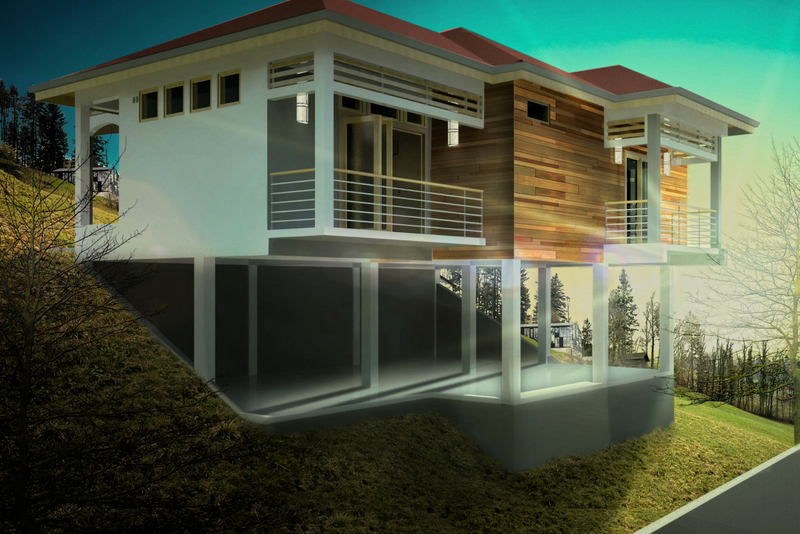
Are you currently searching for a piece of property to build a home for you and your family? We receive many inquiries from individuals searching for flat land because the fact is that flat land is a bit easier and less costly to build on (depending on the location and design of the home to be built). However, on a mountainous island such as Dominica perfectly flat land is not easy to come by and when they do go on the market they do not usually remain there for very long. And while flat land may be what most individual’s desire, hillside properties are usually excellent real estate for homes for a number of reasons. In this article we are going to look at both the advantages and disadvantages of building on sloped land.
Here are four (4) advantages of building on sloped land:
- Building on sloped land along the side of the hill can enhance the natural ventilation that your home receives. This natural ventilation, while a source of fresh air, also aids in decreasing the energy bills of your home by becoming less reliant on artificial cooling.
- When compared to homes built on flat land surrounded by several other buildings homes constructed on hillsides are relatively more energy efficient. This is because of the natural ventilation (as mentioned above) and because they have better access to natural light.
- Hillside properties often boast magnificent views. Being at a higher elevation allows panoramic views of your environment, whether it’s of the majestic mountains or the tranquil ocean. Having an amazing view from the comfort of your home is something that money cannot buy.
- Building on sloped land forces the addition additional floor levels to maximize space and extend vertically rather than horizontally. Because horizontal extension would require huge excavation or reinforcement costs. Once the additional floor levels are added they can character to the home and variety to the space distribution.
Now that we have looked at the advantages, here are two (2) disadvantages of building on sloped land:
- With sloped lands, time and expense is incurred in getting the land suitable for building. That usually involves excavation fees and constructing additional supports for the structure.
- A very probable disadvantage of building along the side of the hill is the possibility of landslides due to heavy or continuous rainfall. Strong winds such as hurricane force winds can also have a significant impact on homes built on hillsides. It is therefore wise to plant deep root trees to help keep soil intact which will decrease the land’s susceptibility to erosion.
In light of the above challenges, proper construction practices, as well as adequate drainage are very important considerations when building on sloped land.
Were the above tips useful? Share this article with family and friends. If you need any clarification on this topic, feel free to email us at feedback@millenia.dm.